Well that wasn’t a particularly auspicious start.
The town of Dawu deep in southern Taitung County is not, it turns out, the gateway to Dawu Mountain (大武山) Nature Reserve. From their reaction, it seemed that nobody in this tiny collection of indigenous-styled wooden houses and its post office had ever heard of the mountain.
So I headed out of town on my rented scooter and followed a road that appeared to lead into the interior. Rice fields, power stations, pretty mountain roads and birds, but no Dawu Mountain.
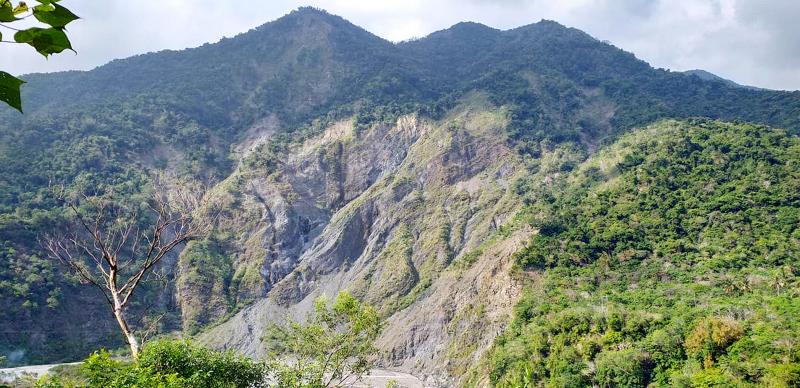
Photo: Gregory McCann
Heading back north on Provincial Highway 9, the views of radiant blue Pacific are reason enough to take a trip here. About 30 minutes south of Taimali Township (太麻里), a sign indicated Jinlong Township (金龍). Beyond the town, large mountains loomed. I turned in.
This backwater, situated at the mouth of a river, is apparently a popular rest stop for cyclists touring the east coast.
On the main road through town a brown and white sign read: Dawu-Shan Eco Education Center 2.5km. It exists! I booked a room at a small hotel a few meters away (Jinlong is a very small town), and hopped back on the scooter to find the road that leads into the interior.
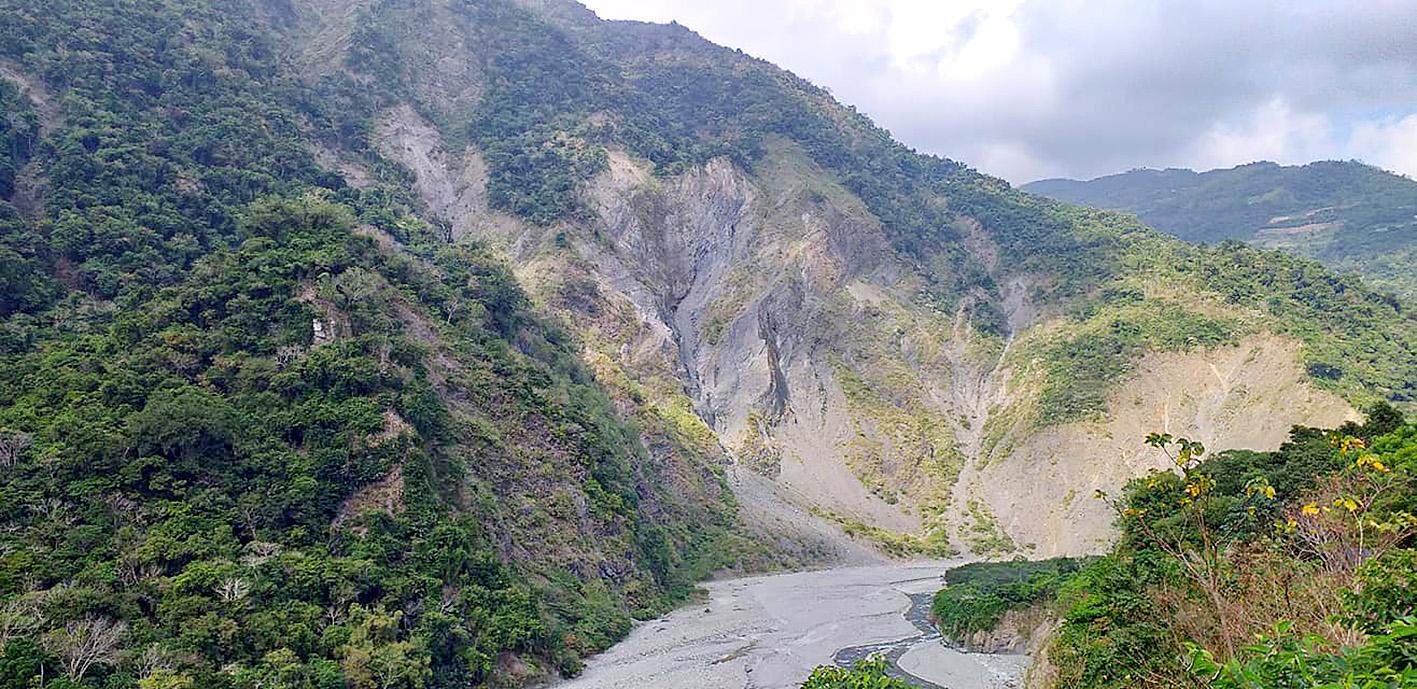
Photo: Gregory McCann
A good indication that I was on the right track murals on a whitewashed cement embankment depicting: mountain scops owl, masked palm civet, wild pig, barking deer, black bear and clouded leopard.
An ornate red bridge led to an empty but well-kept parking lot, so I parked and set off to explore the trail. The river was audible below and I found my way down an embankment and dunked my head into the clear Dawu River (大武溪).
Lots of nice forest, but still way too close to humanity. I climbed back up and found that the trail improved and there was a house in the distance. I drove up and got a sense of where the road led — deeper into the mountains and beyond the last hamlets. It was getting dark and I’d return tomorrow.
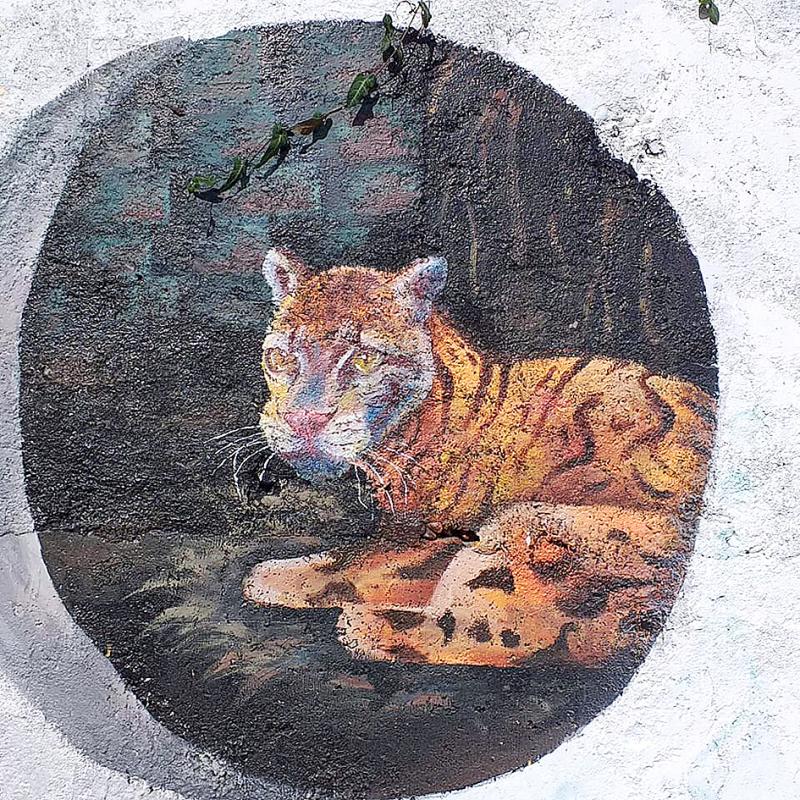
Photo: Gregory McCann
CONSERVATION LEGACY
Scientific interest in Dawu Mountain came into focus in 1987 when the idea that a remnant population of Formosan clouded leopards might persist in the area. The late American big cat conservationist Alan Rabinowitz and his still-kicking and legendary colleague George Schaller (called “GS” in Peter Matthiessen’s classic The Snow Leopard), visited then-president Lee Teng-hui (李登輝) and got the ball rolling for an investigation to begin. Apparently interviews with villagers followed, but nothing could be corroborated about its continued existence.
Taiwanese researcher Po-Jen Chiang (姜博仁) and his team, which received assistance from the big cat NGO Panthera, which was established by Rabinowitz and Schaller, spent 15 years from 1997 to 2012 thoroughly scouting out this area with camera traps and other technology. The Formosan clouded leopard was declared extinct in 2013.
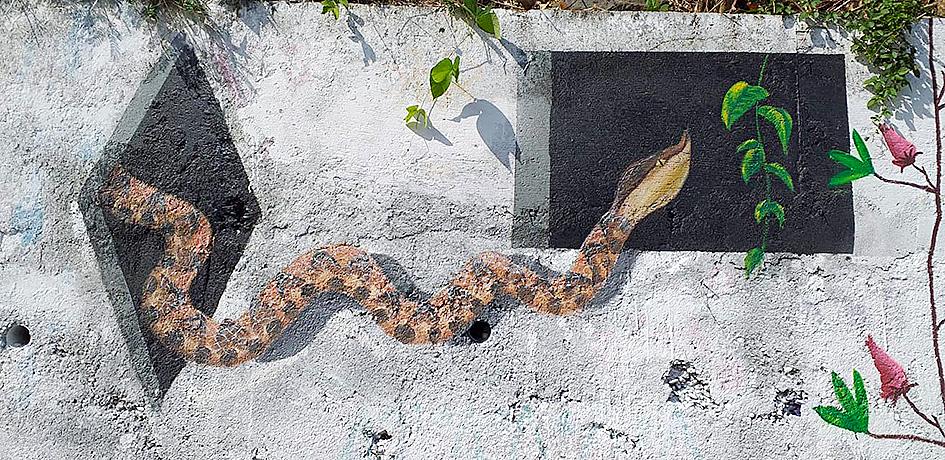
Photo: Gregory McCann
THE TRAIL
The road into Dawu Mountain becomes hillier and the houses fall away, along with the last barking of the dogs. A macaque leaps from one tree to another, and several are making noise in the thick foliage on the right side of the road. There is a sign indicating that pangolins can be found here. The views open up and gigantic mountain that appears as if it had suffered the natural wound of a volcanic eruption sparkles across the valley.
Yes, I can see why Rabinowitz, Schaller and Jiang decided to focus on Dawu in the search for the Formosan clouded leopard. The road narrows, deteriorates and then plunges steeply down. I’ll need to park, and walk.
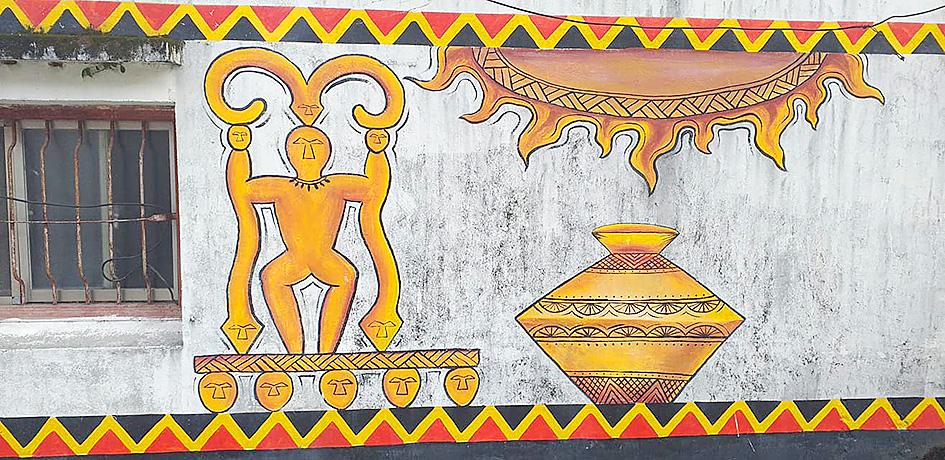
Photo: Gregory McCann
Dawu Mountain is dripping in tropical greenery, and aside from some interesting bird calls, I hear nothing but my tinnitus. I cannot find a way down to the river, and later clouds move in, and a breeze picks up. I luxuriate in the privilege of being alone in remote natural world, and after a while, head back to my scooter. I know the way, and I’ll return in the future.
Driving back, many of the homes were directed in traditional artwork, several of which depicted the venomous banded krait as well as the 100-pacer pit viper (Deinagkistrodon acutus), which many tribal groups view as spiritual snakes.
Whatever the wildlife that can be found here, a trip to Jinlong and Dawu Mountain is certainly worth the effort for travelers looking to get off the beaten path. Like the Taimali and Jhihben canyons to the north, it is highly unlikely that you will find any other people — let alone tourists — on a trek up into the valley, which will involve much more river-tracing than mountain hiking. Indeed, the feeling you are likely to come away with is that you have discovered your own private tropical paradise.

Photo: Gregory McCann
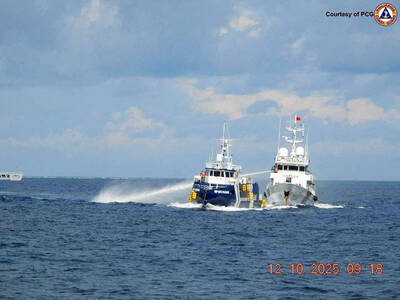
Many people noticed the flood of pro-China propaganda across a number of venues in recent weeks that looks like a coordinated assault on US Taiwan policy. It does look like an effort intended to influence the US before the meeting between US President Donald Trump and Chinese dictator Xi Jinping (習近平) over the weekend. Jennifer Kavanagh’s piece in the New York Times in September appears to be the opening strike of the current campaign. She followed up last week in the Lowy Interpreter, blaming the US for causing the PRC to escalate in the Philippines and Taiwan, saying that as

This year’s Miss Universe in Thailand has been marred by ugly drama, with allegations of an insult to a beauty queen’s intellect, a walkout by pageant contestants and a tearful tantrum by the host. More than 120 women from across the world have gathered in Thailand, vying to be crowned Miss Universe in a contest considered one of the “big four” of global beauty pageants. But the runup has been dominated by the off-stage antics of the coiffed contestants and their Thai hosts, escalating into a feminist firestorm drawing the attention of Mexico’s president. On Tuesday, Mexican delegate Fatima Bosch staged a

Taiwan can often feel woefully behind on global trends, from fashion to food, and influences can sometimes feel like the last on the metaphorical bandwagon. In the West, suddenly every burger is being smashed and honey has become “hot” and we’re all drinking orange wine. But it took a good while for a smash burger in Taipei to come across my radar. For the uninitiated, a smash burger is, well, a normal burger patty but smashed flat. Originally, I didn’t understand. Surely the best part of a burger is the thick patty with all the juiciness of the beef, the

Would you eat lab-grown chocolate? I requested a sample from California Cultured, a Sacramento-based company. Its chocolate, not yet commercially available, is made with techniques that have previously been used to synthesize other bioactive products like certain plant-derived pharmaceuticals for commercial sale. A few days later, it arrives. The morsel, barely bigger than a coffee bean, is supposed to be the flavor equivalent of a 70 percent to 80 percent dark chocolate. I tear open its sealed packet and a chocolatey aroma escapes — so far, so good. I pop it in my mouth. Slightly waxy and distinctly bitter, it boasts those bright,